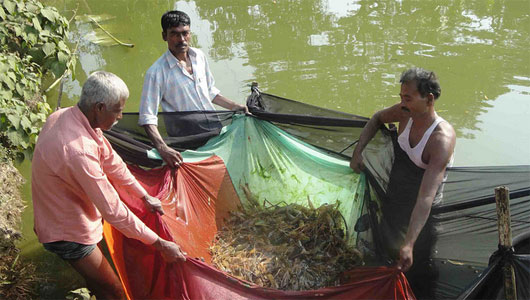
The world may have agreed to start work on a new accord to cut planet-warming emissions due to come into force by 2020, but for many poor people in developing countries, that is an age away. Rice farmers in flood-prone Bangladesh need solutions to their climate woes now, and are finding that prawns may be the unlikely answer.
Located in the Bay of Bengal, low-lying Bangladesh has become one of the most well-known faces of climate change - a riverine land increasingly battered by cyclones and floods that frequently inundate vast swathes of farmland, displacing communities and perpetuating a cycle of poverty and food insecurity for millions.
For months every year, we have (had) to find some other way to make money... like manual labour work or breeding cheap fish like tilapia in our flooded fields, says 48-year-old farmer Raj Mia, standing by his waterlogged rice field in the mud-and-thatch village of Putia, 60 km east of the capital, Dhaka. It was a struggle as we didnt earn much.
Raj, like millions of other rice farmers, lives on the flood plains that make up about 80 percent of the South Asian nation.
Every year, the monsoons thrash down on this fertile rice-growing region crossed by a network of rivers, submerging some 60 percent of the countrys agricultural land and rendering much of it unusable for up to six months, until water levels recede in November.
Complete Article
